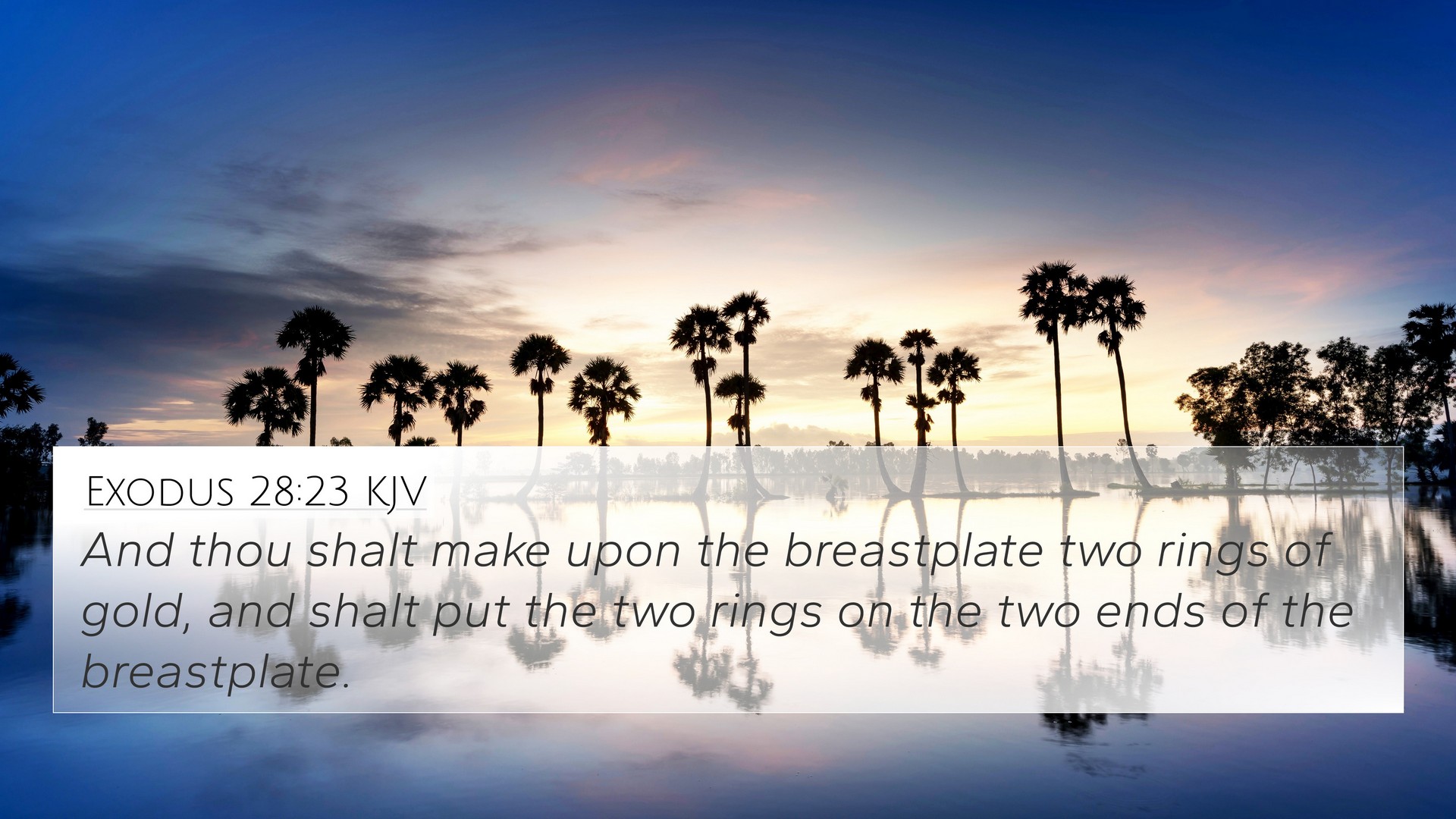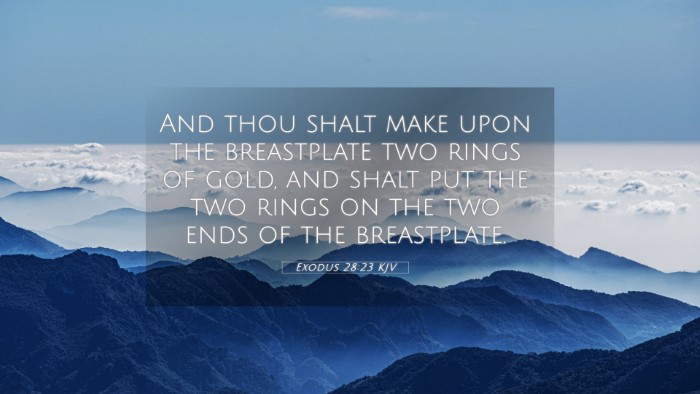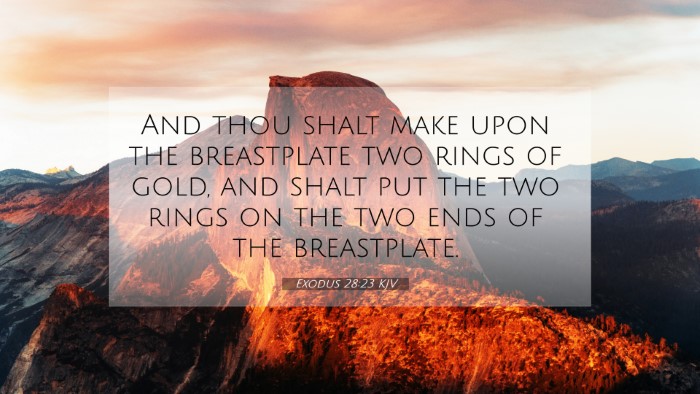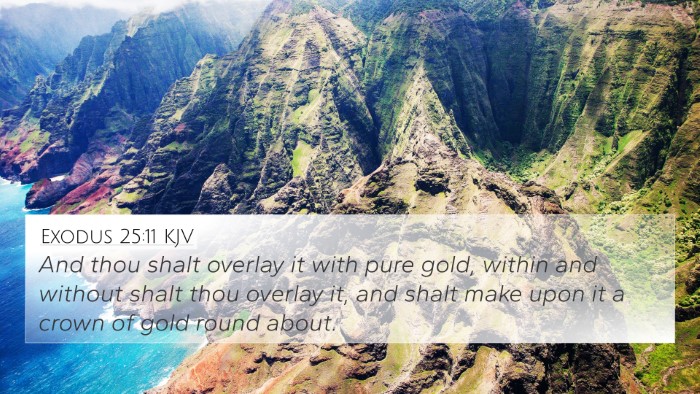Understanding Exodus 28:23
Exodus 28:23 states:
"And thou shalt put in the breastplate of judgment Urim and Thummim; and they shall be upon Aaron's heart when he goeth in before the LORD: and Aaron shall bear the judgment of the children of Israel upon his heart before the LORD continually."
This verse is part of the instructions given to Moses regarding the priestly garments, specifically the breastplate of judgment. This breastplate played a crucial role in how the high priest, Aaron, would represent the people of Israel before God.
Key Themes and Insights
- The Role of the High Priest: Aaron, as the high priest, symbolizes the mediator between God and the people. His clothing, particularly the breastplate, functions as a physical reminder of his responsibility to bear the people's concerns before God.
- Urim and Thummim: These terms refer to sacred lots used for divination. Their presence signifies divine guidance and judgment, suggesting that decisions made by the high priest would be under God's direction.
- Symbolism of the Heart: The heart here reflects not only emotion but also the mind and spirit. Aaron bearing the judgment on his heart indicates the weight of the responsibility he carries for the nation.
- Continual Intercession: The phrase "before the LORD continually" underscores the ongoing nature of intercession. This points to God's desire for continuous communication with His people.
Cross-References Relevant to Exodus 28:23
- Leviticus 8:8: Discusses the breastplate being used as part of the priestly garments.
- Numbers 27:21: Mentions how the high priest would seek guidance from the LORD.
- Exodus 28:15-21: Details the design and purpose of the breastplate.
- 1 Samuel 28:6: Shows the practice of seeking guidance from God.
- Hebrews 7:26-28: Refers to Christ as our ultimate high priest, who intercedes for us.
- James 5:16: Encourages believers to pray for one another, paralleling intercessory roles.
- Revelation 1:6: Affirms the believer’s position as a kingdom of priests.
Thematic Connections and Interpretations
This verse connects deeply with the broader biblical theme of intercession and representation. By examining how different biblical figures, including Aaron and Jesus, fulfill these roles, we can gain a more profound understanding of God's covenant with His people:
- Mediator Role of Christ: Just as Aaron acted as a mediator, so does Christ, who ultimately fulfills the role of high priest.
- Divine Guidance: The Urim and Thummim symbolize the necessity of divine involvement in decision-making processes.
- Representation of the People: The high priest’s garments represent the importance of representing the community's needs before God, a theme that resonates throughout Scripture.
Practical Applications for Today
For believers today, Exodus 28:23 invites reflection on how we approach God and the responsibilities that come with intercession. As the priesthood of all believers, each Christian is called to represent others in prayer:
- Understanding Our Role: Recognizing our position as intercessors carries the importance of how we pray and seek God.
- Seeking Guidance: Just as Aaron sought guidance through the Urim and Thummim, we too are called to seek divine wisdom in our lives.
- Heartfelt Intercession: Bearing others' burdens in prayer reflects the love and compassion that God desires from His people.
Conclusion
Exodus 28:23 is not just a historical account of ancient priestly duties; it has profound implications for today’s believers. The themes of representation, divine guidance, and ongoing intercession resonate with the Christian faith. By understanding the significance of this passage, we can better appreciate our role within God's plan and the importance of linking Bible scriptures to uncover deeper truths.
References for Further Study
To dive deeper into this verse and its connections across the Bible, consider utilizing tools such as:
- Bible Concordance: Helps locate verses and themes related to Exodus 28:23.
- Bible Cross-Reference Guide: A valuable tool for identifying related scriptures.
- Cross-Reference Bible Study: Engages in comparative analysis of verses and themes.



